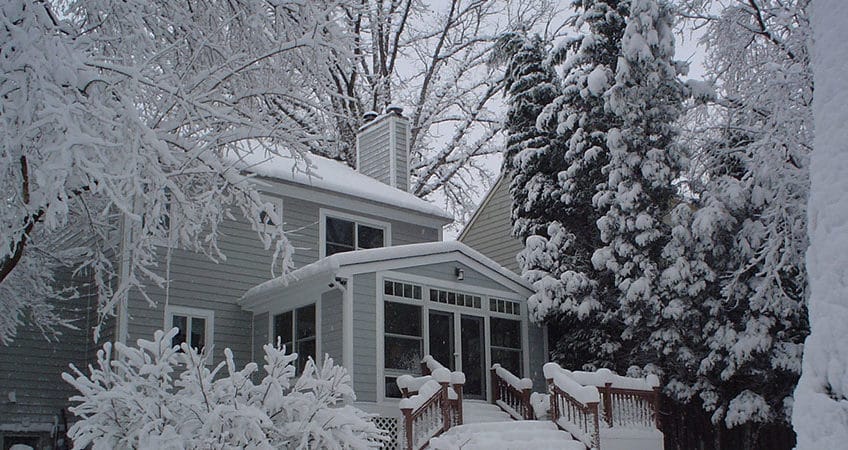Winter in New Hampshire brings quite a few challenges, including icy roads and high heating bills. If you think winter is tough on your family, consider how frigid temperatures and biting winds affect your trees. Caring for trees in winter involves understanding the problems that may arise and helping your tree make it through unscathed.
What Are Cold Stresses?
Various conditions in the winter can affect your trees, creating cold stresses and potentially damaging the bark and branches. When mature trees are exposed to extreme temperature shifts (warm days turn to freezing nights), stress found between the wood interior and the outer bark layer lead to frost cracking.
Unsightly cracks may heal naturally, but that area will be vulnerable from that point on. You have the option to apply various products around the tree, acting as insulation against those extreme temperature shifts. Burlap is a good natural choice, or look around for manufactured tree blankets.
Early frosts can also damage new growth by rupturing the cells on these bursting branches. For trees that grow late into the fall, it’s best to prune only after the tree has enter the dormant period. This eliminates the presence of new growth and creates better growing conditions in the spring. Hiring a professional to take care of your fall pruning is a wise move and takes this worry completely away.
Evergreens May Dry Out
Do your have evergreens planted as a windbreak? These trees are especially vulnerable to winter drought – a condition that exists when the tree cannot absorb enough water to offset the losses from wind and evaporation. Evergreens tree are susceptible, but other species may also experience this condition.
Applying a thick later of mulch under the trees is your best defense against winter drought. Mulch helps the soil to retain water and also insulates the tree roots for better health and growth.
Trees can survive extreme winter conditions, but certain circumstances cause serious damage, even to mature specimens. Caring for trees in winter means preparation in the fall and keeping an eye on the trees throughout temperature changes and dry spells. Your trees are worth the effort.

